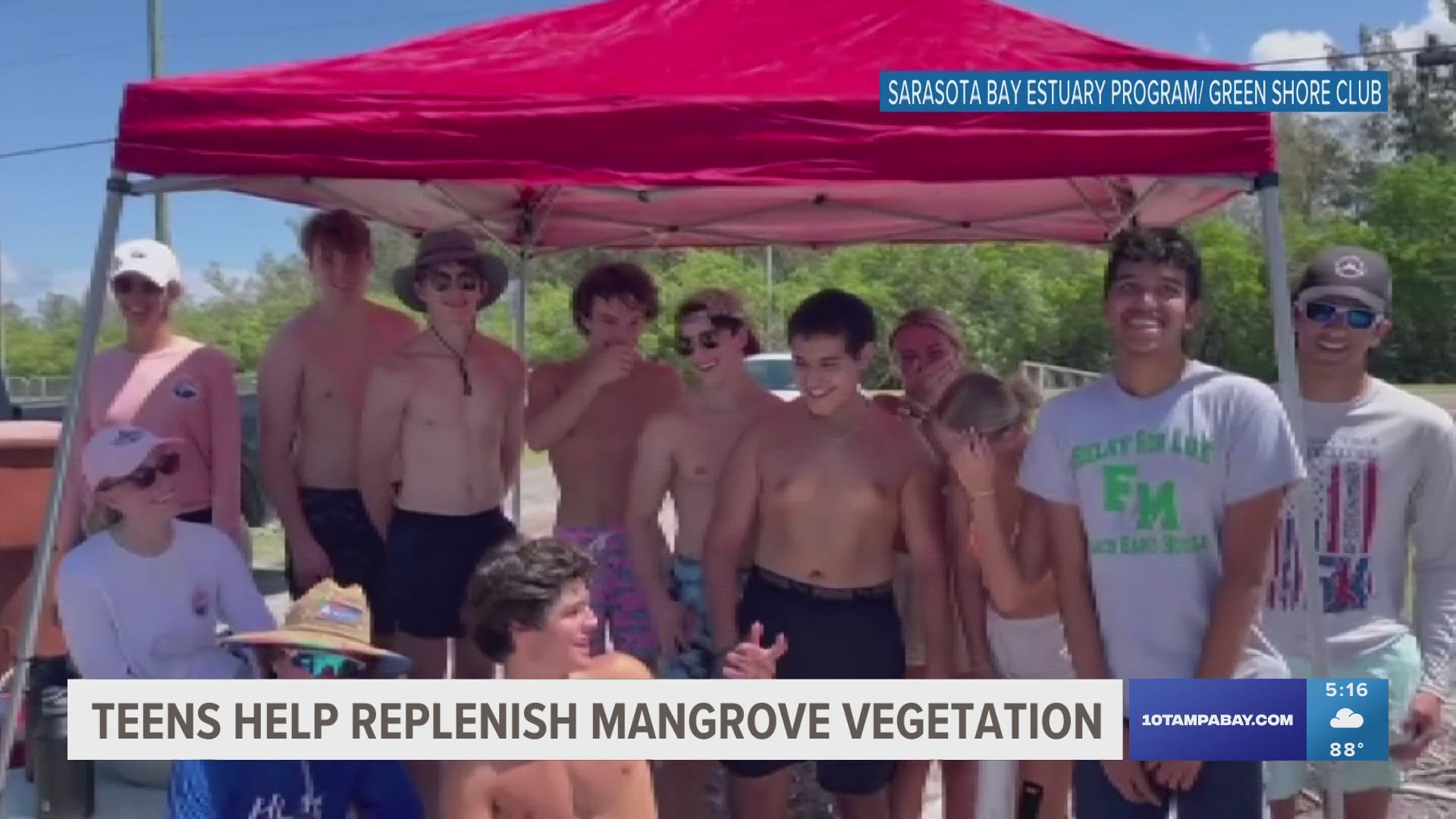SARASOTA COUNTY, Fla. — Nearly two years later, the impacts of Hurricane Ian are still very visible in some of Florida's west coast communities hardest hit.
It's also spurring some teens to embark on a mission to help replenish mangrove vegetation along the coast. The concerns of the rising seniors have taken them from Fort Myers to the Tampa Bay area.
"We would ride around on our bikes and see if just to share destruction of the community and how it looked like almost a bomb had gone off and so to us we just needed something that we could rally behind and had to you know kind of help build a community back together," said Benjamin O'Brien of Fort Myers.
O'Brien is a rising senior at Fort Myers High School and one of the founding members of the Green Shore Club, an environmental action group.
He, a dozen teens from his school and others in the city teamed up with biologists on a mangrove replenishment mission.
In two hours, they helped replant more than 2,500 mangrove propagules or seedlings at the Florida Institute for Saltwater Heritage in Cortez.
"To talk to the scientist and be able to realize that really all you have to do is plant them in the ground, in the right spot along the water, in the waterline, and then they will grow. It just really was eye-opening to us to how much impact we can contribute to our area," O'Brien said.
"Two months ago I didn't know anything about mangroves but you know through a little bit of online research and going on the boat like experiment a little it's now I've got it pretty much down," said Luke Scrabis of Fort Myers.
Scrabis is also a founding member of the club and is also a rising senior at the same high school.
According to environmental experts at the Sarasota Bay Estuary Program, models show Florida's coasts will lose thousands of acres of its mangrove vegetation within the next 30 years.
They said some of that loss is due to what is called a coastal squeeze, which is caused by coastal over-development, illegal harvesting and climate change-driven sea level rise.
"Mangroves to an awful lot of good stuff for us and yet we really don't do a great job protecting him in Florida," said Dave Tomasko with the Sarasota Bay Estuary Program.
Among the benefits of mangroves is the protection of property and shoreline during severe wave action brought by storms, as well as serving as a habitat to wildlife and marine life like oysters which create a natural filtration system.
"And when the mangrove leaves drop into the water, they produce tannins that help keep algae blooms under control, and also as those leaves decompose they are the basis of the food chain that actually helps create a healthy estuary," Tomasko said.
"It's probably more likely that we lose them more than we can replenish them and that's not good for our water quality is not good for protection," he said.
The teen group says creating avenues to help with the restoration of the mangroves, every mangrove seed counts towards the bigger picture of conservation, especially when it's a substitute for screen time.
"I want to go out and explore and kind of like learn something new about the environment. I want to go hang out with people as if I'm working on some software. I'm not hanging out with many people. I'm not having much fun," Scrabis said.
"It's a win-win for everybody. We're making the world slightly better by these mangroves and we're also enjoying ourselves out on the beach," O'Brien said.
The group is now planning to plant more than 5,000 mangrove seedlings before the end of the summer in the Sanibel Island area.

